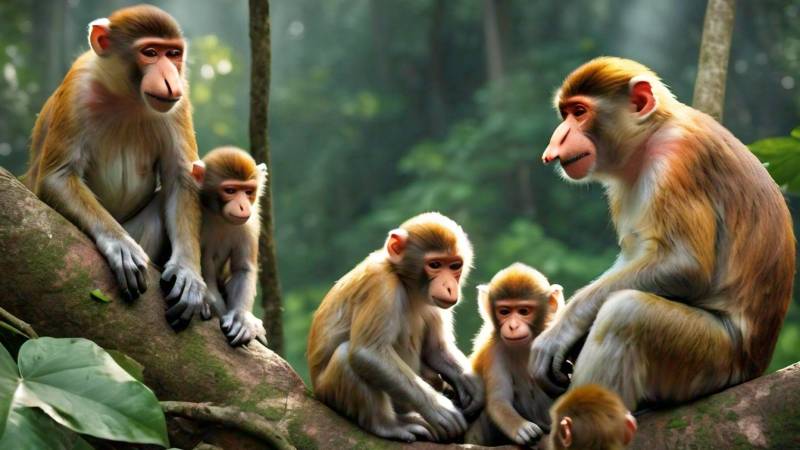Proboscis monkeys, known for their long, large, and droopy noses, may have an evolutionary edge in the animal kingdom. Researchers from The Australian National University (ANU) have provided the first-ever explanation for why male proboscis monkeys have larger and “enhanced” nasal structures, revealing that their prominent noses offer several major benefits, especially when it comes to attracting potential female partners.
Uncovering the Secrets of the Bony Nasal Cavity
Dr Katharine Balolia and former ANU masters student Pippa Fitzgerald used 3D scans of proboscis monkeys’ skulls housed in museum collections to measure the size and shape of the internal structure of the primates’ bony nasal cavity. They discovered that the shape of the bony structure of the nasal cavity of male proboscis monkeys evolved to allow them to emit louder and deeper calls, such as “honks and nasal roars.”
“We found that males have much bigger nasal cavities than female monkeys, and their nasal cavities also have a different shape compared to females,” Dr Balolia said. “Being able to emit louder and deeper calls thanks to a longer and larger nasal cavity helps male monkeys to assert their health and dominance.”
The Evolutionary Advantages of a Big Nose
The researchers suggest that the ability to attract females and ward off other males through these loud, nasalised calls is a significant evolutionary advantage for male proboscis monkeys. “The more females a male can attract, the more it allows him to father more offspring. So having a large nose and being able to more easily emit honks and nasal roars due to a uniquely shaped nasal cavity really helps males show off their quality and status to prospective female partners,” Dr Balolia explained.
The jungle-like environment in which these endangered primates live could also explain why their noses evolved to become so big. Proboscis monkeys inhabit coastal mangroves and forested environments where visual communication is often limited. As a result, loud, nasalised calls are essential for communication among the monkeys, especially among males.
“The fleshy nose tissue likely got bigger over time as it enhanced their ability to let out nasal honks and roars. Proboscis monkeys rigidly straighten their noses when giving these calls,” Dr Balolia said. “Females may have then started to find large noses visually attractive for selecting a mate as it was an honest signal of health and dominance.”
The study also found that the bony nasal cavity opening of male proboscis monkeys, where the fleshy nasal soft tissue attaches, gets bigger with age, which is consistent with older males having larger noses. “This coincides with when they achieve dominance status among other male monkeys, allowing them to scare off other males and attract a lot of females who are ready to breed,” Dr Balolia added.
The research, published in Scientific Reports, part of the Nature journal portfolio, sheds new light on the evolutionary significance of the proboscis monkeys’ distinctive noses and highlights the importance of understanding the unique adaptations of endangered species.
If our reporting has informed or inspired you, please consider making a donation. Every contribution, no matter the size, empowers us to continue delivering accurate, engaging, and trustworthy science and medical news. Independent journalism requires time, effort, and resources—your support ensures we can keep uncovering the stories that matter most to you.
Join us in making knowledge accessible and impactful. Thank you for standing with us!

